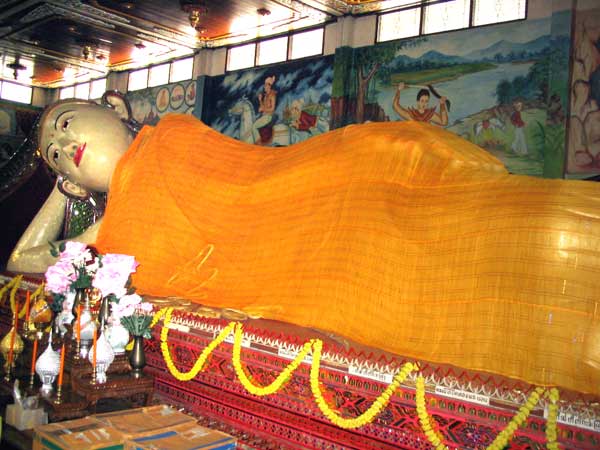Former governors of Chiang Mai used to organise the rounding up of wild elephants which were then trained before being sent to the capital for work. Today, Mae Hong Son is one of the dream destinations for visitors. Daily flights into its small airport bring growing numbers of tourists, attracted by the spectacular scenery, numerous hilltribe communities and soft adventure opportunities.
THAI YAI CULTURE
 The Thai Yai can be seen along the northern border with Myanmar. They may at one time have been the most numerous of the ethnic Thai tribes that stretch across Southeast Asia. A large group settled in Mae Hong Son.
The Thai Yai can be seen along the northern border with Myanmar. They may at one time have been the most numerous of the ethnic Thai tribes that stretch across Southeast Asia. A large group settled in Mae Hong Son.
The Thai Yai culture has had a strong influence on the province, as can be seen in its architecture. Although a part of the Lanna region, the indigenous Thai Yai people living in Mae Hong Son are faced with very cold weather during winter and extremely hot weather in the summer, with mist or fog practically throughout the whole year. Not surprisingly they have had to adapt to the environment.
As a result, their architectural style has developed into something different from other Lanna communities. Their living quarters are usually built with tall floors and low roofs, the sizes differing according to ones social status and position. Homes of the ordinary folks are usually with one single level of roof, while those of the local aristocrats have two or more levels forming a castle-like shape. The space thus provided is believed to help air circulation. An interesting feature of the Thai Yai style is the perforated designs along the eaves which are an architectural identity of the area.

1. Wat Phra Non
Wat Phra NonThis temple at the foot of Doi Kong Mu houses a 12-metre long reclining Buddha image in the Thai Yai style. The image was cast in 1875 by Phranang Miah, the wife of Phraya Singhanatracha. Another main feature of the temple is the two large sculpted lions lying side by side, presumably providing the passage for those going up to pay homage to the Holy Relic on the hill


Wat Kam Ko
Opposite Wat Phra Non, Wat Kam Ko is a Burmese-style temple built in 1890. A special architectural feature is the cover over the passageway from the entrance arch to the chapel. It also stores text in Thai Yai script chronicling the Thai Yai history.
3. Wat Hua Wiang
Wat Hua Wiang

Another name is Wat Klang Mueang. This temple is on Sihanatbamrung Road next to the morning market. Built in 1863, the temple houses the Phra Chao Pharalakhaeng, a Buddha statue dressed in beautiful attire. It is a replica of a major statue in Mandalay, Myanmar.

Thanks for sharing such an informative post. have you visited Kushi nagar? Kushinagar is a very ancient and historical place in Uttar Pradesh of India. It is famous place named of Lord Buddha. There are very beautiful Buddhist Temple So, attracts for tourism. You can find more - Best restaurants in Kushi Nagar | Temple in Kushinagar | places in Kushinagar.
ตอบลบ